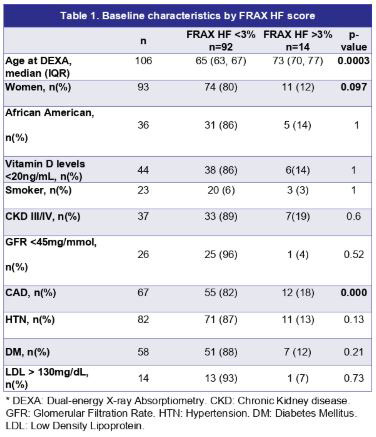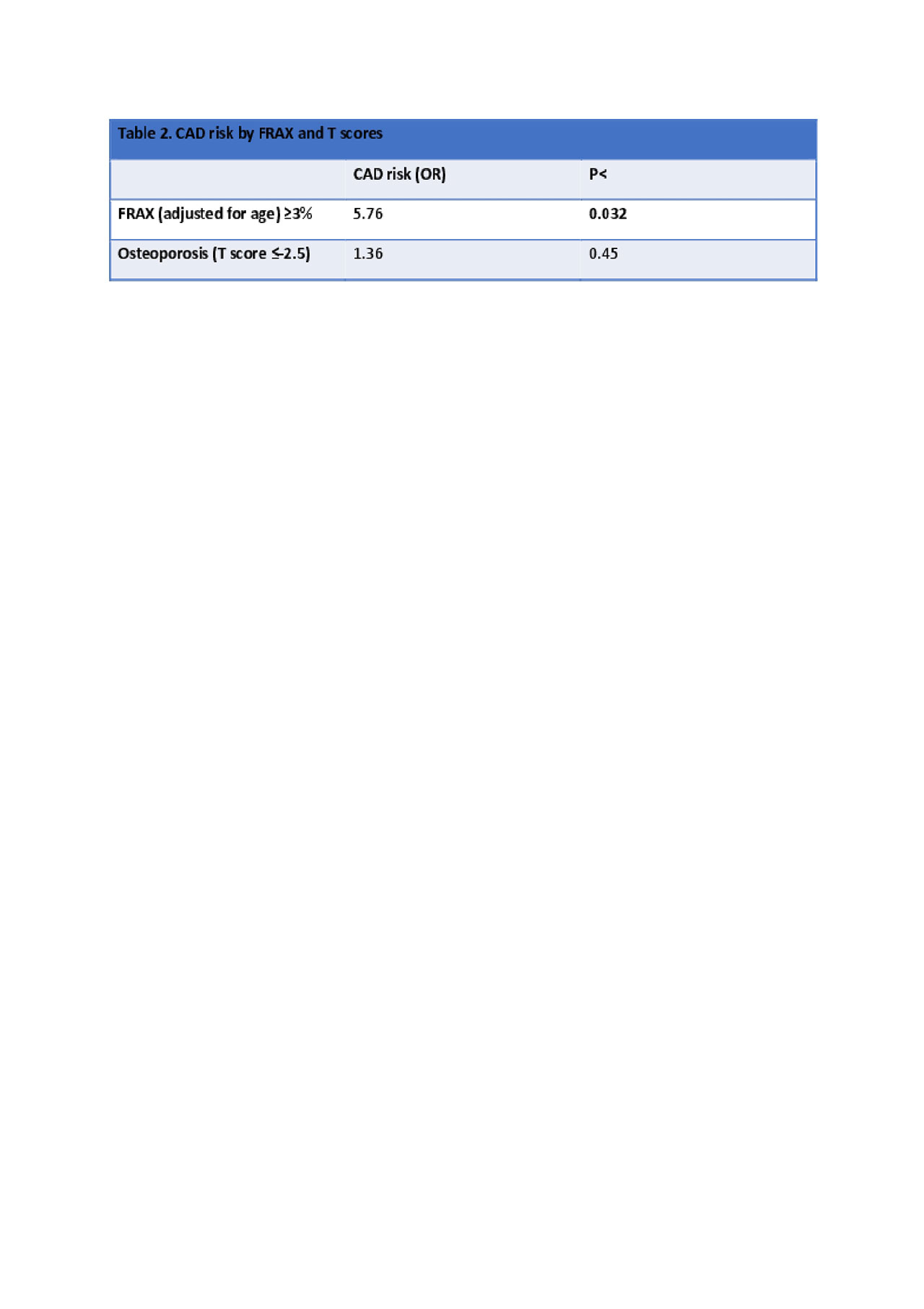Session Information
Date: Tuesday, November 12, 2019
Title: Osteoporosis & Metabolic Bone Disease – Basic & Clinical Science Poster
Session Type: Poster Session (Tuesday)
Session Time: 9:00AM-11:00AM
Background/Purpose: An association between low bone mineral density (BMD) and cardiovascular events has been shown. The calcification process observed in atherosclerosis and bone mineralization have a common pathogenesis pathway. Bone health parameters are not yet incorporated in the cardiovascular risk assessment scale. The objective of our study was to look for an association between standard bone health scores and coronary artery disease (CAD) in our patient population.
Methods: A retrospective chart review of 1,134 patients who underwent cardiac catheterization between 2011 and 2017 at Jacobi Medical Center was performed. Patients between the age of 40 and 90 years who had a bone densitometry done within three years of the cardiac catheterization were included in the study. 106 patients met the inclusion criteria. Their baseline demographics, cardiac risks, and bone mineral density data were analyzed. Patients were categorized to have CAD if any of the epicardial coronary artery had ≥50% stenosis. Bone density levels were categorized by standard WHO classification. FRAX (Fracture risk assessment tool) scores were calculated using a validated online tool. Standard 10-year risk of hip fracture cut-off of 3% was used. Multivariate Logistic regression modeling was used to quantify the association between FRAX score and occlusive CAD. Variables were included in a multivariate model if they modified the association between the two by greater than 10%.
Results: Median age of the patients was 66.3 +/- 8.5 years and 91% were female. Thirteen percent of patients had a FRAX score ≥3%. Both groups were identical with respect to their demographic, metabolic, and cardiovascular risk profiles (Table 1). Standard secondary causes of osteoporosis were not different between the groups. Patients with FRAX score of ≥3% were 5.76 times more likely to have occlusive CAD in at least one of the coronaries than those with score of < 3% (OR 5.76; 95%CI 1.16-28.5, p< 0.032) after adjusting for age which is incorporated in the calculation of FRAX score. There was no association between bone densitometric T score and occlusive CAD (Table 2).
Conclusion: Bone health has shown to be an independent risk factor for angiographic CAD when adjusted for age in our patient population. Although the T score was not found to be significant, FRAX score adjusted for age of ≥3% was found to be strongly associated with significant angiographic coronary artery disease based on our data. Patients with FRAX score of ≥3% should be screened for CAD. Our observation warrants further research in this field.

Table 1. Baseline characteristics of the patients based on FRAX score

Table 2. CAD risk by FRAX and T scores -2-
To cite this abstract in AMA style:
Bizzocchi L, Salgado M, Chokshi B, Kaur N, Mena O, Packman M. Bone Health: An Independent Predictor of Coronary Artery Disease [abstract]. Arthritis Rheumatol. 2019; 71 (suppl 10). https://acrabstracts.org/abstract/bone-health-an-independent-predictor-of-coronary-artery-disease/. Accessed .« Back to 2019 ACR/ARP Annual Meeting
ACR Meeting Abstracts - https://acrabstracts.org/abstract/bone-health-an-independent-predictor-of-coronary-artery-disease/
